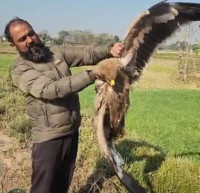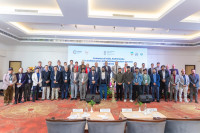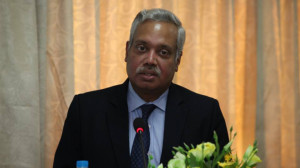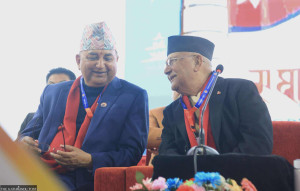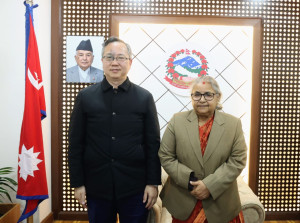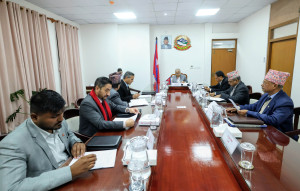National
Six suspected Sri Lankan underworld gang members arrested in Kathmandu
Key suspect in Sanjeewa Kumara Samararathne murder found hiding in Bhaktapur; immigration department preparing deportation.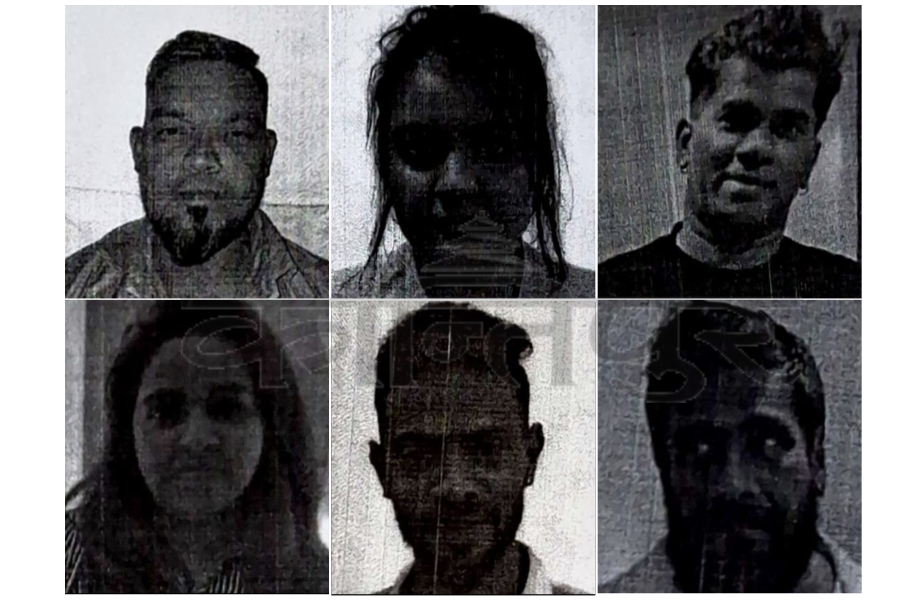
Gaurav Pokharel
A key suspect in the murder of Sri Lankan underworld leader Sanjeewa Kumara Samararathne, known as Ganemulla Sanjeewa, was found hiding in Nepal.
In a special operation coordinated with Nepal Police, six suspects linked to the killing were arrested in Kathmandu. Investigations show the group had been living across Kathmandu and Bhaktapur.
Senior police sources identified the arrested suspects as Ishara Sewwandi Weerashingha Pinpura Dewage, Jeevathasan Kanakarasa, Takshi Nanthakumar, Dinesh Shyamantha De Silva Kaludara, Kenedy Bastiampillai, and Dinesh Nisantha Kumara Wikkrama Arachchige. Ishara Sewwandi is the main accused in the Sanjeewa murder, which took place on February 20, 2025, inside a Colombo court.
Interpol had issued a red notice for the suspects, alerting member countries to track individuals wanted for crimes. The embassy of the issuing country may also become involved in such cases.
A Nepal Police officer said, “The Sri Lankan Embassy in Kathmandu expressed concern in this case, prompting us to start surveillance. The operation was carried out by a team from the Interpol National Central Bureau at Nepal Police Headquarters, Naxal.”
Police confirmed that all six suspects are members of the notorious Sri Lankan underworld gang led by Kehelbaddara Padme, involved in drug trafficking and organised crime from Malaysia and Dubai. Interpol had issued red notices against them, and Padme was arrested in Indonesia on August 25. Local Sri Lankan media reported that Padme masterminded Sanjeewa’s murder.
Investigators found that at the time of the murder, the main suspect, Sewwandi, had rented a room in Bhaktapur, claiming to the landlord that she was an Indian citizen. “She said she was from Bengaluru, India, and had been staying in Bhaktapur for about a month, mostly staying inside her room,” said an investigating officer. “She may have avoided going out to minimise risk.”
The shooter, Dilshan Piyumanga, was arrested by Sri Lankan police on the day of the incident. CCTV footage from the court showed that Sewwandi had assisted him by entering the court disguised as a lawyer, smuggling a weapon hidden inside a book.
After her identity was revealed, Sewwandi fled to India by sea. “We have information that she spent around Rs6.5 million to escape, stayed in India for about two weeks, and then reached Kathmandu overland,” an officer said. “She apparently felt safe here, believing the Nepal Police would not arrest her.”
Following intelligence from Sri Lankan police and the embassy in Kathmandu, Nepal Police launched the operation that led to the suspects’ arrests.
Another suspect, Kenedy Bastiampillai, also known as J.K. Bai, was arrested at a hotel in Thamel. “J.K. was in contact with the main gang leader. Using the information he provided, we located Sewwandi,” an official said.
Jeevathasan Kanakarasa and Takshi Nanthakumar were arrested near Mitrapark, New Bus Park.
Police sources stated that two of the arrested suspects had passports and likely entered Nepal by air, while the remaining four had no identification documents and are believed to have entered via India by sea and then crossed into Nepal by land.
“Since they committed no crimes in Nepal, we are coordinating with the Department of Immigration,” the officer said. A senior official at the department confirmed that preparations are underway to deport all six suspects. “They have already paid the fines required under Nepali law,” the official told the Post.
Nepal and India share an open border, allowing criminals to flee between the two countries through porous entry points. In such cases, police coordination helps ensure fugitives are identified and handed over to the relevant authorities. Interpol officials noted that Sri Lankan criminals hiding in Nepal have been rare.




 10.12°C Kathmandu
10.12°C Kathmandu

